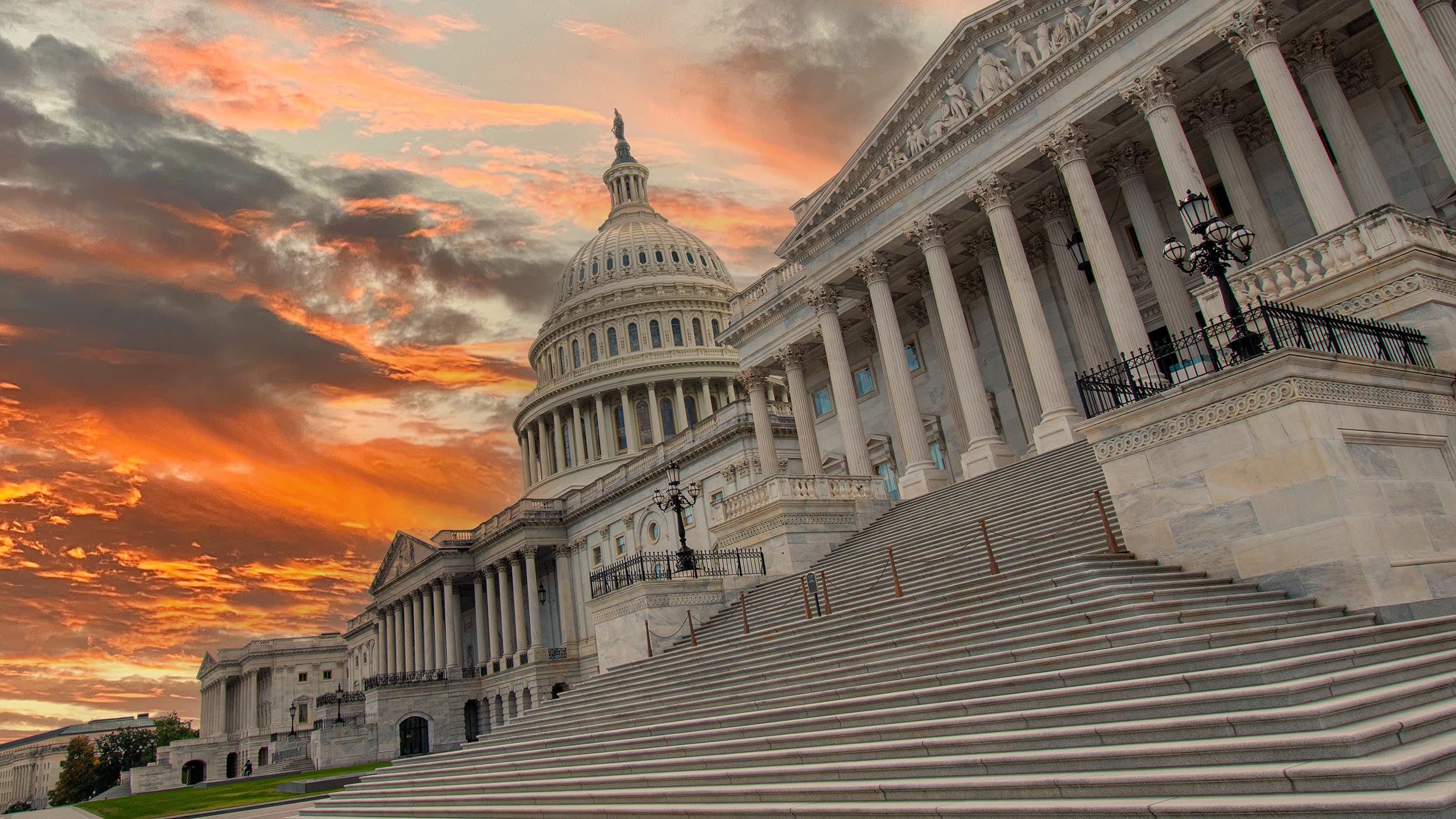
Markets and Economy Treasuries, sentiment, and earnings: What investors need to watch
Six things to watch in the coming weeks, including US Treasury yields, US and European sentiment, US earnings outlook, and Chinese economic data.

If Congress doesn't pass a spending bill or continuing resolution by March 14 at midnight, parts of the government will start to shut down.
Many past shutdowns (but not all) led to market volatility, which tended to resolve quickly with limited to no impact.
Don’t let any short-term market volatility from a government shutdown change your long-term investing plan.
The fifth US government shutdown of the century is drawing near. If the Congress can’t pass legislation to fund the government by March 14, 2025, large swaths of the federal government will cease operations. The country would risk breaching the debt ceiling and defaulting on its obligations. What is a government shutdown, and is one imminent? How could a government shutdown affect the stock market? Should investors be concerned?
During a shutdown, essential government functions would continue to operate. This includes, but isn’t limited to, air-traffic control, border patrol, federal prisons, power grid, mail delivery, disaster relief, food-safety inspections, military, and tax collection. Seniors will continue to receive Social Security and Medicare. Veteran benefits, unemployment benefits, and food stamps will still be administered.
Non-essential government activities would cease though. Examples abound, but here are just a few. The Justice Department would suspend civil cases. NASA would pause most projects but continue to support to the International Space Station. National Zoos and Parks would close, though zoo animals will be fed.
A shutdown is no laughing matter for the estimated 3 million federal employees. Non-essential workers would be furloughed. Essential workers will be paid retroactively when Congress funds the government again. In 2019, roughly 800,000 non-essential workers were furloughed, and 1.3 million essential workers received IOUs.
Government shutdowns have precedent. Should it happen, this would be the 22nd since modern Congressional budgeting began in 1976. The longest — 34 days — lasted from December 2018 to January 2019, during the first Trump administration.1 Most were resolved much more quickly, with an average length of eight days. Five only lasted a day.
Shutdowns typically end when one or both political parties can no longer withstand the public’s ire. During the 2013 government shutdown, Congress’s approval rating fell to a record-low 9%.2 For context, at the time, that was below approval ratings for head lice, root canals, traffic jams, and even colonoscopies. Currently, 29% of Americans approve Congress, down from a multi-year high of 36% in March 2021.3
The good news is that government shutdowns haven’t really affected the stock market historically. While there have been examples of heightened market volatility, it’s generally been benign. The S&P 500 Index posted positive returns during 12 of the 21 government shutdowns. The average S&P 500 return during shutdowns has been 0.1%.4 (Remember, shutdowns have been resolved, on average, within eight days.)
Source: Bloomberg L.P., 12/31/22. The Dow Jones Industrial Average is a price-weighted index of the 30 largest, most widely held stocks traded on the New York Stock Exchange. Volatility is measured by the standard deviation of price moves on returns of the index. Standard deviation measures a range of total returns for a portfolio or index compared to the mean. An investment cannot be made into an index. Past performance does not guarantee future results.
In the 12 months following the December 2018 government shutdown — the most recent — the S&P 500 Index gained 26.2%. It returned 19.72% in the year following the infamous shutdown of 2013. In fact, since 1980, the average S&P 500 return in the 12 months following the government closing is 16.95%.5
Extending the timeline even further, a $100,000 investment in the S&P 500 Index in 1957 would’ve been worth $12.6 million by the end of 2024.6 That’s despite 21 government shutdowns.
While unnerving, concerns about shutdowns shouldn’t change investors’ long-term investment plans; sticking to the plan may be the best way forward. This wouldn’t be the first government shutdown, and it likely won’t be the last. Ultimately, we expect the spending bill (or bills) to pass without incident and a shutdown to be averted or short-lasting.
We also expect the debt ceiling to be raised. Failure to do so would likely prove quite disruptive to markets. A reassessment of US Treasuries’ creditworthiness would likely lead to a reconsideration of all other asset classes. Fortunately, the Treasury Department reports that it has the ability to use cash balances and extraordinary measures to extend the debt ceiling for many months past the first quarter.
In the meantime, the deadline is approaching, and the political gamesmanship is ramping up. Past shutdowns have generally been short with little noticeable impact for most people. Let's hope history repeats itself.
Source: US Treasury, 8/31/23
Source: Gallup, 2/26/25. The Congressional Approval Rating fell to 5% in the Associated Press poll. It never got below 9% in the Gallup poll.
Source: Gallup, 2/26/25
Source: Bloomberg, L.P. 12/31/22. An investment cannot be made into an index. Past performance does not guarantee future results.
Source: Bloomberg L.P., 2/26/25, based on the returns of the S&P 500 Index. An investment cannot be made into an index. Past performance does not guarantee future results.
Source: Bloomberg L.P., 12/19/24. The S&P 500 Index is a market-capitalization-weighted index of the 500 largest domestic US stocks. Performance based on price returns. An investment cannot be made into an index. Past performance does not guarantee future results.

Six things to watch in the coming weeks, including US Treasury yields, US and European sentiment, US earnings outlook, and Chinese economic data.

As a trade war rages, a massive market sell-off in the US and around the world raises many questions for investors.

We assess what President Trump’s “Liberation Day” tariffs might mean for US and global markets, equities, and more.
Important Information
NA4282079
Image: Douglas Rissing / Getty
Past performance is not a guarantee of future results.
Indexes are unmanaged and cannot be purchased directly by investors. Index performance is shown for illustrative purposes only and does not predict or depict the performance of any investment.
Past performance does not guarantee future results.
All investing involves risk, including the risk of loss.
In general, stock values fluctuate, sometimes widely, in response to activities specific to the company as well as general market, economic and political conditions.
The opinions referenced above are those of the author as of March 4, 2025. These comments should not be construed as recommendations, but as an illustration of broader themes. Forward-looking statements are not guarantees of future results. They involve risks, uncertainties and assumptions; there can be no assurance that actual results will not differ materially from expectations.
This link takes you to a site not affiliated with Invesco. The site is for informational purposes only. Invesco does not guarantee nor take any responsibility for any of the content.